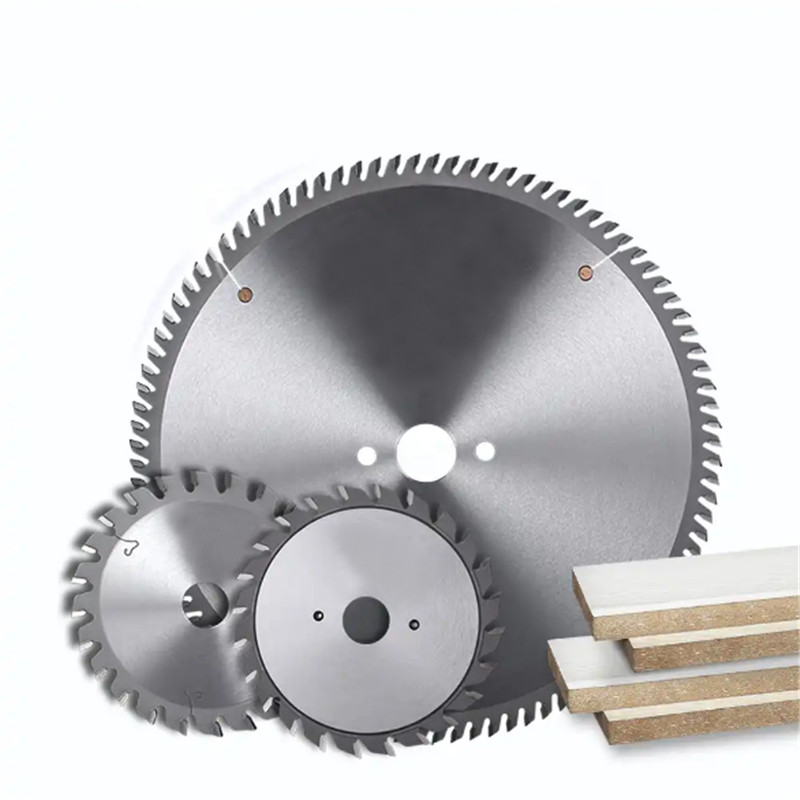Application
The hard alloy saw blades are mainly used for cutting various materials, including wood saw blades, aluminum saw blades, asbestos tile saw blades, and steel saw blades. Different types of alloy saw blades require different types of alloy blade materials because different materials have varying requirements for hardness and wear resistance.
Wood saw blades:
Used for cutting wood, typically made from YG6 or YG8 medium-grain hard alloy. This alloy material offers good hardness and cutting performance, suitable for cutting wood.
Aluminum saw blades:
Used for cutting aluminum materials, usually made from YG6 or YG8 fine-grain hard alloy. Aluminum is relatively soft, so the alloy blade needs to have higher hardness to ensure cutting efficiency and longevity.
Asbestos tile saw blades:
These types of blades may require special design to handle hard and brittle materials like asbestos tiles. The specific alloy material may vary depending on the manufacturer and requirements.
Steel saw blades:
Used for cutting steel materials, typically made from tungsten titanium alloy. Steel materials have high hardness and wear resistance, so a more robust blade material is needed to tackle this challenge.

In summary, different types of hard alloy saw blades require suitable alloy blade materials to meet the requirements of different materials and ensure cutting efficiency and tool longevity. Choosing the right hard alloy material can enhance the performance and durability of the saw blades.
Characteristics
Saw blade alloys are typically made from hard alloys (also known as tungsten carbide alloys or tungsten-cobalt alloys) and possess several key characteristics that make them an ideal choice for cutting tools. Here are some of the main characteristics of saw blade alloys:
High Hardness:
Hard alloys are extremely hard, able to resist wear and deformation during cutting. This allows saw blades to maintain a sharp edge and stable performance during cutting.
Excellent Wear Resistance:
Hard alloys exhibit outstanding wear resistance, enduring repeated cutting operations without failure. This results in a longer blade lifespan.
High Strength:
Saw blade alloys typically have high strength, capable of withstanding the impact and pressure during cutting operations, reducing the risk of breakage or deformation.
Good Heat Stability:
Hard alloys can maintain their hardness and stability even under high-temperature conditions, which is crucial for high-speed cutting operations.
Good Cutting Performance:
Hard alloys provide excellent cutting performance, ensuring efficient cutting operations and reducing energy consumption during cutting.
Chemical Stability:
Hard alloys generally have high resistance to various chemicals, contributing to the extended lifespan of the saw blade.
Customizability:
Hard alloys can be tailored to specific cutting requirements, allowing for adjustments in alloy composition to meet the demands of different materials.
In summary, the characteristics of hard alloy saw blades make them ideal tools for cutting various materials, featuring wear resistance, high hardness, strength, and good heat stability, suitable for different types of cutting tasks.
Material Information
| Grades | Grain (um) | Cobalt(%)±0.5 | Density (g/cm³)±0.1 | TRS (N/mm²)±1.0 | Recommended Application |
| KB3008F | 0.8 | 4 | ≥14.4 | ≥4000 | Applied to machining general steel, cast iron, non-ferrous metal |
| KL201 | 1.0 | 8 | ≥14.7 | ≥3000 | Applied to machinign aluminum, non-ferrous metal and general steel |

















